The 'graphic novel' is an evolving process, though an account of the whole of it from the beginning would be a big undertaking. But for instance, there was a very distinct phase between 2003 and 2006 during which a number of New York book publishers adventured into the arena.
Doubleday, an imprint of Random House managed to get three books out before it axed its graphic novel line (march 28 2003)
Reed Graphica, imprint of Reed Communications, was even more short lived (dec 12 2003)
Scholastic Launched New Graphic Novel Imprint (July 13 2004) and did well with Jeff Smith's Bone and Shaun Tan's The Arrival, both of which had been previously published elsewhere. If you look at their web page you'll see that they associate the form with young readers. This was a trend among the NY book publishers that worried me. On the other hand, Norton commissioned Genesis from Crumb (2 Sept 2004) First second, an imprint then of Holtzbrinck, now of MacMillan, made its debut in Spring 2006. Hill and Wang, imprint of distinguished literary house Farrar, Straus & Giroux launched its series of non-fiction comics works fall 2006. And so on.
An aspect of this wave of activity was that for the huge 224 page book commissioned from Crumb we'd have to wait five years, till 2009, and even longer for Craig Thompson's Habibi, commissioned by Pantheon in the same year. (Pantheon is the book publisher with the longest success with comics, beginning with its series of '...for beginners' going all the way back to 1978.) Habibi, at 672 pages, was a long seven years in the making. Such a thing was very rare even as recently as the 1990s, when it was a given that a comic of such length would have to be be serialized first. I think Ethel and Ernest by Raymond Briggs (1998 Jonathan Cape) and Safe Area Gorazde by Joe Sacco (2000 Fantagraphics) were the first occasions when works of impressive size were published straight to book, though i have probably overlooked one or two (City of Glass, 1994...The Jew of New York, 1998...).
I've noticed a new phase in which individuals of the generation associated with the 'graphic novel' now find themselves the subjects of attractive monographs. last year there was the lovely The Art of Jaime Hernandez: The Secrets of Life and Death by Todd Hignite, from Abrams, this year Ilex's book on Alan Moore by Gary Millidge, and next year I see we can look forward to one on Daniel Clowes, also from Abrams.

The Art of Daniel Clowes: Modern Cartoonist, will be published in April 2012.
Doubleday, an imprint of Random House managed to get three books out before it axed its graphic novel line (march 28 2003)
Reed Graphica, imprint of Reed Communications, was even more short lived (dec 12 2003)
Scholastic Launched New Graphic Novel Imprint (July 13 2004) and did well with Jeff Smith's Bone and Shaun Tan's The Arrival, both of which had been previously published elsewhere. If you look at their web page you'll see that they associate the form with young readers. This was a trend among the NY book publishers that worried me. On the other hand, Norton commissioned Genesis from Crumb (2 Sept 2004) First second, an imprint then of Holtzbrinck, now of MacMillan, made its debut in Spring 2006. Hill and Wang, imprint of distinguished literary house Farrar, Straus & Giroux launched its series of non-fiction comics works fall 2006. And so on.
An aspect of this wave of activity was that for the huge 224 page book commissioned from Crumb we'd have to wait five years, till 2009, and even longer for Craig Thompson's Habibi, commissioned by Pantheon in the same year. (Pantheon is the book publisher with the longest success with comics, beginning with its series of '...for beginners' going all the way back to 1978.) Habibi, at 672 pages, was a long seven years in the making. Such a thing was very rare even as recently as the 1990s, when it was a given that a comic of such length would have to be be serialized first. I think Ethel and Ernest by Raymond Briggs (1998 Jonathan Cape) and Safe Area Gorazde by Joe Sacco (2000 Fantagraphics) were the first occasions when works of impressive size were published straight to book, though i have probably overlooked one or two (City of Glass, 1994...The Jew of New York, 1998...).
I've noticed a new phase in which individuals of the generation associated with the 'graphic novel' now find themselves the subjects of attractive monographs. last year there was the lovely The Art of Jaime Hernandez: The Secrets of Life and Death by Todd Hignite, from Abrams, this year Ilex's book on Alan Moore by Gary Millidge, and next year I see we can look forward to one on Daniel Clowes, also from Abrams.

The Art of Daniel Clowes: Modern Cartoonist, will be published in April 2012.
The book will be edited by Alvin Buenaventura, publisher of the highly-regarded independent comics publishing house Buenaventura Press, and will feature essays by book designer, editor and comics expert Chip Kidd, acclaimed cartoonist Chris Ware and others. “Alvin Buenaventura has pulled together an exciting collection of art and essays, all of which have come together beautifully to showcase Dan’s considerable talents,” said Kochman. This year Clowes was also awarded the Pen Center USA's 2011 Literary Award for Graphic Literature for an outstanding body of work.The 'graphic novel' has now travelled so far along its course of evolution that we even have a whole book about a single book:
Labels: new books (3)
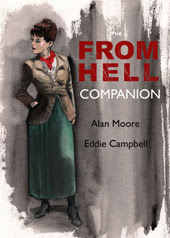


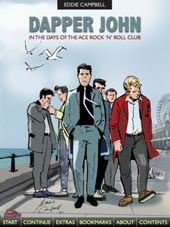
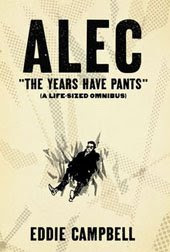
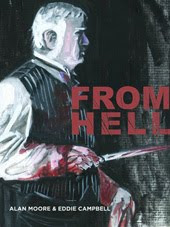
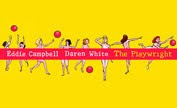
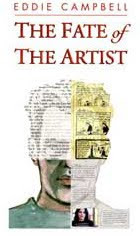






8 Comments:
Our Cancer Year (Pekar/Brabner/Stack) was also 1994, from Four Walls Eight Windows, a smaller "real books" publisher that had previously done the American Splendour best-of collection.
Without seeing anything about it, I've assumed that MetaMaus is largely going to be an adaptation of the Maus CD-Rom, from let's go ahead and say 1994 too. Fits in with Spiegelman's revisiting and reinterrogating his previous work in the Breakdowns reprint.
Ah yes, Our cancer year. Forgot it was that long ago.
I was just thinking about how it applies to Eisner. If memory serves, To the Heart of the Storm was the first book of significant girth (let's leave out the Dreamer and City Notebook etc, which would not have taken a whole year to draw) that wasn't serialized first. In other words, it was 1991 before he was back where he had hoped to be in the first place in 1978.
Again, it was a process that the medium had to work through.
A minor point: I'm pretty sure that The Jew of New York was serialized page-by-page in the Forward before it was published by Pantheon.
It's less a matter of Scholastic associating graphic novels with younger readers, and more a matter that they are a children's book publisher who found works that were suitable for their target audience. While Scholastic has certainly had works that crossed over to an older audience (Harry Potter being the obvious example) they have done quite well bringing books to the younger market, where they have some unique distribution opportunities. They continue to be a strong GN publisher with direct-to-book works like Kibuishi's Amulet series or Dav Pilkey's Ook & Gluk.
And McCloud's 'Understanding Comics' (1993), or is that not a graphic novel, being rather a graphic monograph on the topic of the medium?
Nat, yes, I should have expressed that more completely.
First Second, as an offshoot of children's book imprint Roaring Book Press, was in a similar position. And the graphic novel line of Australia's Allen and Unwin is part of their Young readers department. The part of the book trade that was most inclined to take an interest in the 'graphic novel' was the part that was already dealing with 'young readers,' (and books that have illustrations.) the overall effect was the promotion of the form as a young readers 'genre'. Libraries seemed to universally like that, and I started to see the term 'adult graphic novel' popping up in library usage, implying that they saw on not aimed at kids as as an anomaly. While pitching book ideas for a couple of years there I certainly found it necessary to make the point up front that I wasn't talking about a kids book.
Isaac, yes, scratch that one. Supports my thesis better.
h.n. yes, Tundra was throwing money around more than any other publisher. In fact, I can't imagine any other at the time doing that book. And once it was successful, Scott could have taken his next one just about anywhere.
I thought of you the other day as a friend of mine who is running a kickstarter campaign to fund a comic (her words) was asked if her projet was a comic or a graphic novel... I had to roll my eyes.
Intersting enough Good Reads proposes book recommnedation in various categories, which include comics AND graphic novels as distinct genres. But the recommendations provided are the same.
Post a Comment
Subscribe to Post Comments [Atom]
<< Home